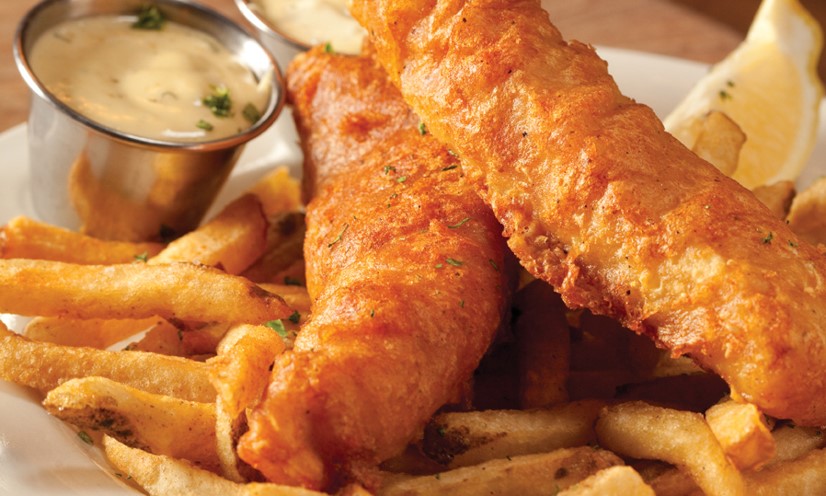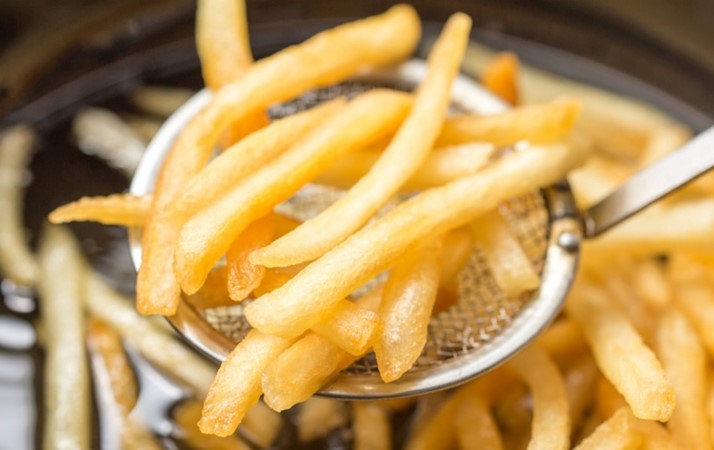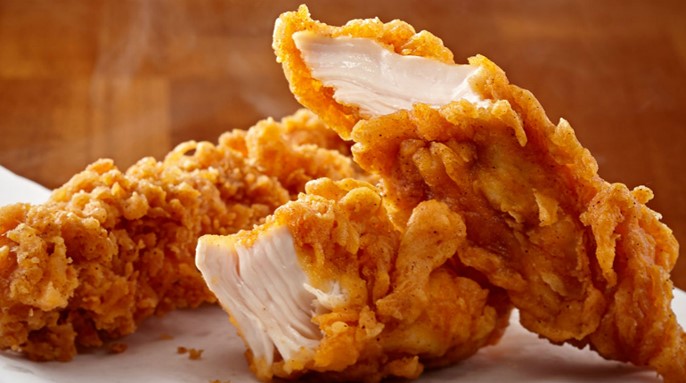Do you know the 12 best frying practices for consistency and cost?
1. Start with the right oil.
Premium oils designed for deep frying are more costly on the front end, but are durable and long-lasting, giving chefs better performance which can lower the actual food cost.
2. Cooking Temp is crucial.
Some foods fry better at 325 degrees, while the flavor and texture of other foods are maximized at 375 degrees. Given the menu diversity found in modern restaurants, that compels chefs to adjust their ingredient choices or to have multiple fryers set at unique temperatures to fry those foods ideally. Knowing such temperature parameters before choosing an oil is wise.
3. Don’t miss the benefit of a resting temperature.
Even when oil is at peak freshness, high heat is breaking it down and reducing its lifespan. When possible, reduce fryer temperatures to 200 degrees Fahrenheit to lower oil stress and shave a few dollars off your utility usage.

4. Frying frozen foods frozen is ideal.
Since many frozen products, such as French fries, are blanched to lower cook times, the sharp temperature contrast between freezer and fryer is ideal for yielding crispy, golden-brown results. When possible, keep frozen products frozen until ordered. Even when allowed to “slacken” in a refrigerator on the hot line, the end result can be less than desired.
5. Shake before frying.
Shake fryer baskets over a receptacle prior to lowering into the fryer. Do this with batter-fried, flour coated or frozen items. By allowing as much loose batter as possible to drip off before lowering the basket into the hot oil. Food particles that accumulate at the bottom of a fryer pot can degrade oil more quickly as they burn.
6. Half-full beats totally full every time.
When baskets are crowded with too much product, two negatives occur: Oil temperature drops significantly, and food items wind up in contact with each other in- stead of floating freely in a bath of hot oil. Filling a basket past half-full can yield greasy food that’s not crisp or properly browned.

7. Fill to the line.
Product crowding and temperature crashes occur when fryers aren’t filled to correct levels. Since this can happen during a busy rush — even when cooks filled the fryers hours before — it’s wise to check the line often and have backup oil handy to add quickly.
8. Skim the surface frequently.
Even the most attentive cook can’t retrieve 100% of the food placed in a fryer, so keep a spider or flat skimmer near the fryer for frequent surface skimming. Leaving even small particles burning in the oil will reduce its lifespan and impart off flavors to foods fried afterward.
9. Cover at close.
Like any oil, fryer oil can oxidize over time and perform below standard. To reduce airflow over the oil and exposure to oxygen, cover the fryer with a sheet pan or other sturdy, heat-resistant material. Doing so will also lower chances of foreign objects falling into the oil.

10. Test fryer oil quality frequently.
While a visual check of your fryer oil’s color and clarity are great ways to determine whether it needs changing, checking food color and food quality to gauge its real condition is best. Oil is costly, and there’s no need to throw it out unless you’re certain it’s spent.
11. Cool before filtering.
Shut down fryers after last order to allow the oil to cool for nightly filtering. If your restaurant doesn’t have an auto-filtration system, it’s advisable to let the oil cool to 200 degrees or lower before draining. Using a long, heat-resistant brush, shove as much of the accumulated food particles as possible down the nozzle and into the filter.
12. Schedule a thorough cleaning.
Fryer oil is easy to change, but cleaning the fryer isn’t. That’s why it needs to be a scheduled part of your kitchen team’s duties, perhaps something done as a pre-shift duty to ensure fryers are completely cool. Since each fryer manufacturer’s cleaning specs are unique, it is best to follow those.





